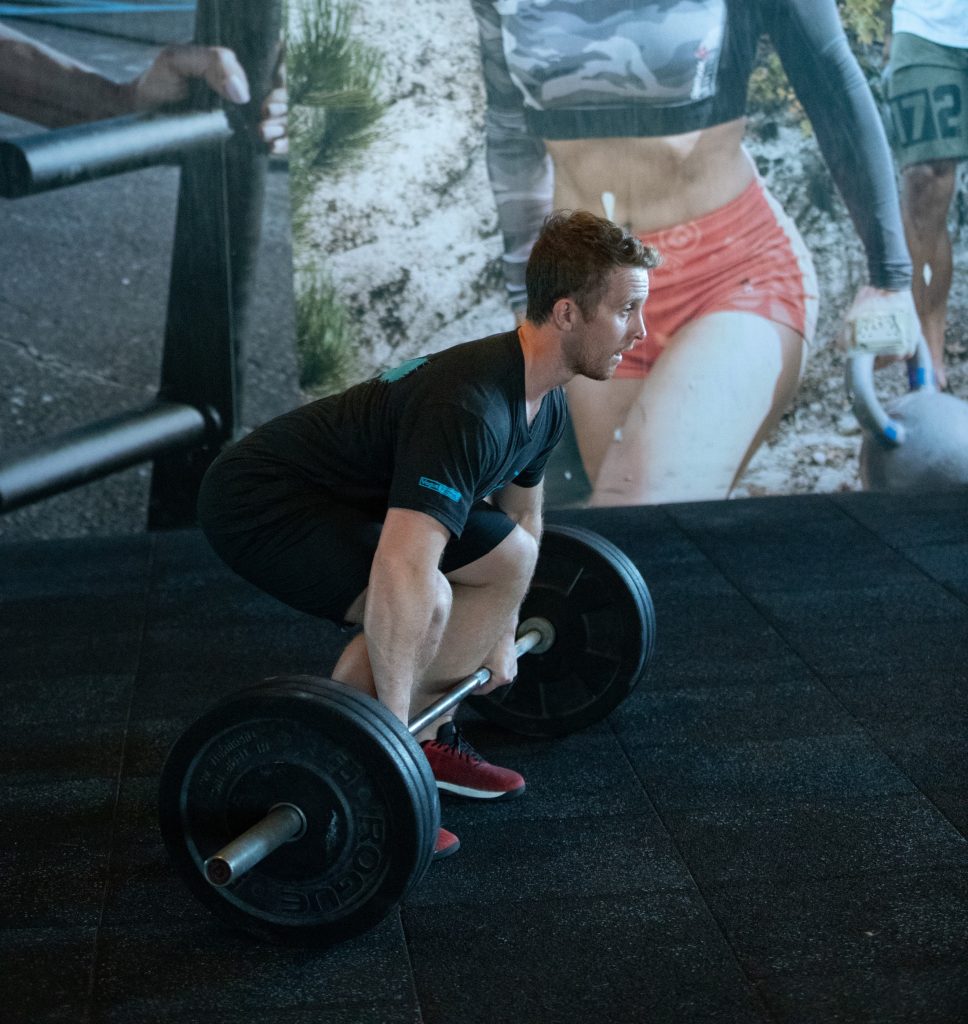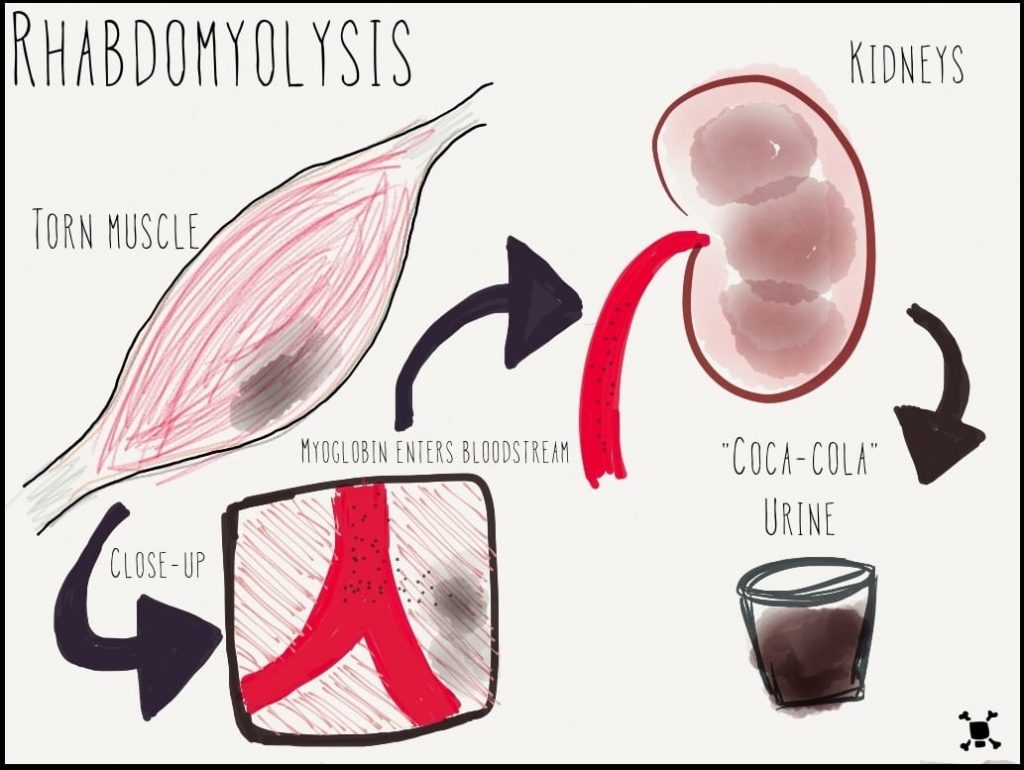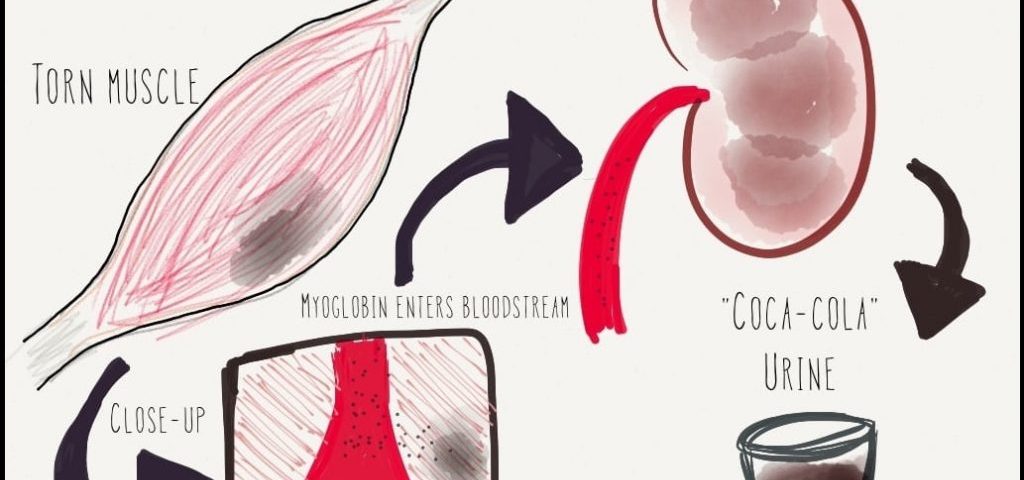
How do we develop poor posture?
June 24, 2019
Treating Back pain with Dead Lifts
July 7, 2019
Rhabdomyolysis
is a condition in which muscle fibers breakdown or get damaged due to direct or indirect muscle injury. This breakdown of muscles causes the release of a protein called myoglobin into the blood. This can be serious because if you have high levels of myoglobin it can cause 8cc318kidney problems or even kidney failure because the kidneys cannot filter it out. Hence kidney tubes will be plugged, and all your waste products will get concentrated in the kidneys and cannot be removed. Here’s what you need to know about rhabdomyolysis:
Type of muscles affected by Rhabdo:
The human body has three different types of muscles: smooth muscles, skeletal muscles and heart muscles. Smooth muscles are those found in organs such as stomach or intestines. Skeletal muscles are the muscles attached to bones and are responsible for moving your body such as arm or thigh muscles. These skeletal muscles are the ones that can get affected by rhabdomyolysis. So, don’t worry, eating intensely will not give you Rhabdo! … Might give you indigestion or bloating so you also want to be careful with that.

How do you get Rhabdo:
Most commonly from extreme
physical activity or an intense workout session such as running a marathon or
doing Murph – a high intensity Crossfit workout (Crossfitters would know!). If
you push too much beyond what your body can handle, which let’s face it, it’s
not smart but it happens especially when you’re training for a competition or
even during a competition. This can put high stress on muscles and can damage or
disrupt muscle fibers resulting in Rhabdo.
Other causes include:
- Extreme muscle strain especially in untrained
athletes - Low levels of electrolytes in the blood
(magnesium, potassium, phosphate) - A crush injury: from an accident or fall or
something heavy falls on you - Third degree burns, heat stroke, electric shock
or lightning strike - Prolonged coma
- Severe muscles contractions during seizures
- Medications such as anti-psychotics, statins
(used to treat high cholesterol) - Severe hypothyroidism (low thyroid level)
- Muscular diseases such as muscular dystrophy
- Drugs such as cocaine, LSD
The symptoms of Rhabdo:
The damage to the muscles causes
inflammation and you will start to feel tenderness, swelling and weakness in
those muscles, soreness, muscle aches and pain and infrequent passing of urine.
Another common symptom is dark urine color (red or cola) which is a result of
myoglobin (the muscle protein) being released into the blood and kidneys trying
to pass it out from your body through the urine.

Other symptoms you should pay attention to
which are more related to complications of rhabdo in severe cases include:
- Symptoms of kidney problems such as swelling of
hands and feet - Shortness of breath if fluid builds up in the
lungs - Fatigue and weakness
- Symptoms of high potassium in blood such as
nausea, lightheadedness, palpitations - Unexplained bleeding or excessive bleeding with
delayed clotting
Diagnosing Rhabdo:
Most of you will google your
symptoms and arrive to this conclusion of Rhabdo anyway. But to get properly
diagnosed with rhabdo, blood and urine tests must be done to confirm that
you’ve been struck with the Rhabdo. Elevated levels of creatine kinase, myoglobin,
potassium and creatinine will confirm the diagnosis.
Rhabdo complicating life even
more:
The biggest and most serious
complication of rhabdo is kidney failure. In severe cases, when you really
crushed your training and crushed your muscles with it, there will be
dangerously high levels of myoglobin concentrated in the kidneys which the
kidney can no longer filter out and get rid of, hence they will block those
tubes and the kidneys will stop functioning normally. Other complications
include:
- Irregular heartbeat or cardiac arrest due to
high level of potassium in the blood - Liver problems
- Compartment syndrome due to massive swelling
increasing pressure in a confined space which can compress nerves and blood
vessels and lead to tissue damage and reduced blood flow (for example in lower
legs, arms or abdominal muscles)
Making peace with Rhabdo
Treatment of rhabdo depends on
the cause and how bad it is. If your rhabdo is exertional, meaning caused by
intense workouts, then it can simply be managed by rest, rehydration, replacing
electrolytes in mild cases. Getting enough fluid into your body should be your
main goal and then of course terminating your exercise for some time until have
fully recovered. In severe cases, you may need to visit the hospital to
promptly hydrate your body through IV fluids, correcting electrolyte levels to
protect your heart and kidneys, monitor kidney function and remove provoking
factors if any, such as medications or underlying muscle problem.
Good news for you, most causes of
rhabdo are reversible. Unless rhabdo is caused by a medical condition such as
diabetes, thyroid or muscular genetic disorder, you should consult with a
doctor to provide you with the appropriate treatment.
“Don’t let Rhabdo crash your exercise party”

Nermine F.
[ad_2]
Source link



